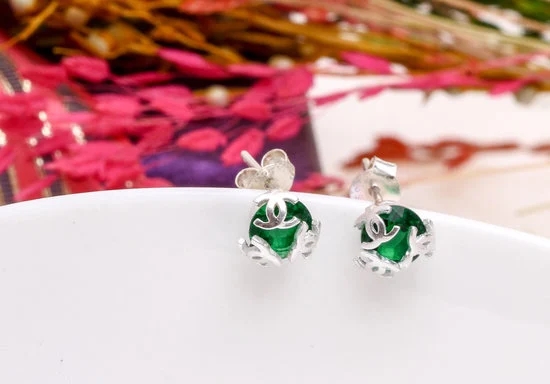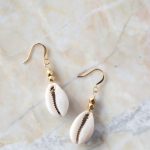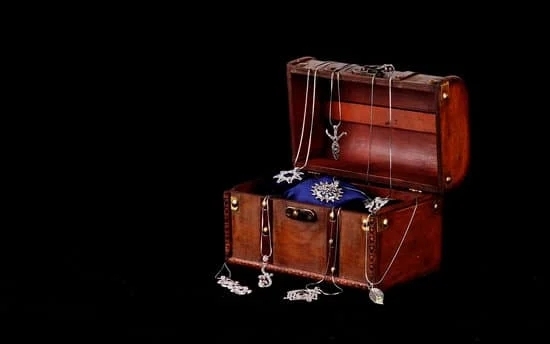From exquisite burial masks to intricate pendants, ancient Egyptian jewelry continues to captivate minds with its opulence and beauty. One cannot help but be awestruck by the mastery displayed in the craftsmanship of these accessories, particularly those adorned with gold and inlaid jewels. In this blog post, we will delve into the extravagant legacy of gold in ancient Egyptian jewelry and unveil the mesmerizing beauty of inlaid jewels.
Gold held immense significance in Egyptian culture, not only as a symbol of wealth and power but also as a sacred material associated with divinity. This precious metal was utilized meticulously by skilled artisans to create breathtaking pieces that adorned both royalty and common individuals alike.
We will explore how gold was used to craft jewelry that ranged from elaborate necklaces to intricately designed rings. It is impossible not to mention famous examples such as the burial mask of Tutankhamun, a marvel gilded in gold that epitomized the Ancient Egyptians’ reverence for this precious metal.
In addition to gold, another technique that set ancient Egyptian jewelry apart was the process of inlaying various jewels. The enchanting technique involved carefully setting semiprecious stones, glass, or faience into hollowed-out areas on jewelry items, resulting in striking colors and patterns.
These inlaid jewels were used not only for aesthetic purposes but also carried symbolic meaning. The pectoral of Tutankhamun stands as a shining example of how this technique could elevate a piece from being aesthetically pleasing to one carrying immense cultural significance.
Join us as we embark on an exploration of the world of ancient Egyptian jewelry with gold and inlaid jewels on display. Through this journey, we hope to uncover the hidden stories behind these treasured artifacts and gain insight into their enduring allure throughout history.
The Extravagant Legacy of Gold in Ancient Egyptian Jewelry
Gold holds a special place in the history and culture of ancient Egypt. In fact, it was considered the metal of the gods and held immense religious and symbolic importance. The ancient Egyptians believed that gold was associated with the sun god Ra, representing power, eternity, and divinity. As a result, gold became an integral part of their jewelry-making tradition.
In ancient Egypt, gold was used to create stunningly intricate pieces of jewelry that showcased the wealth and status of individuals. The craftsmanship involved in creating these pieces was truly remarkable. Skilled artisans would meticulously shape gold into various forms such as collars, bracelets, rings, and amulets.
One famous example of gold jewelry that highlights the opulence and skill of ancient Egyptian jewelers is the burial mask of Tutankhamun. This iconic golden mask is adorned with precious gemstones and represents one of the most extravagant examples of Egyptian craftsmanship. It is not only a testament to the skill and artistry possessed by these ancient jewelers but also serves as a vivid depiction of their beliefs surrounding death and afterlife.
Gold continues to captivate audiences today with its timeless appeal. Whether it be through replicas or modern interpretations, wearing gold jewelry reminiscent of its ancient Egyptian legacy evokes a sense of connection to one’s ancestors while adding an element of majesty to any outfit. From delicate necklaces to bold statement rings, golden adornments have become popular choices for those seeking elegance with a touch of history.
Unveiling the Beauty of Inlaid Jewels in Ancient Egyptian Jewelry
When admiring the opulence of ancient Egyptian jewelry, one cannot overlook the breathtaking beauty and craftsmanship of inlaid jewels. Inlaying was a technique that involved setting small pieces of material, such as semiprecious stones, glass, or faience, into a base material to create intricate patterns and designs. This technique played a crucial role in enhancing the allure and symbolism of ancient Egyptian jewelry.
Semiprecious stones were often used as inlaid jewels in ancient Egypt. Gemstones like lapis lazuli, carnelian, amethyst, and turquoise were highly prized for their vibrant colors and believed powers. These stones were carefully cut into various shapes and sizes before being set into the jewelry. The vivid hues created by these inlays added depth and richness to the overall design.
Glass was another popular material used for inlaying in ancient Egypt. The Egyptians were masterful glassmakers who developed unique techniques to create colorful glass objects. They would crush these glass objects into powder and then melt them to fuse onto a base material. The resulting molten glass was shaped into delicate forms or used to fill engraved lines on metal surfaces. This technique allowed for an array of vibrant colors to be incorporated into the jewelry.
Another commonly used material for inlaying was faience, a type of glazed earthenware made from quartz or sand mixed with small amounts of lime or natron. Faience could be molded into different shapes and fired to create bright blue or green tiles that were then set into gold or silver settings. This technique gave ancient Egyptian jewelry an exquisite touch of color while also serving symbolic purposes associated with fertility, protection, and rebirth.
An example showcasing the extraordinary use of inlaid jewels can be found in the pectoral (necklace) worn by Tutankhamun. The pectoral features a centerpiece in the shape of a falcon, with intricate inlays made of lapis lazuli, carnelian, and colored glass. These vibrant inlays contrast against the gold base, creating an exquisite piece that reflects not only the technical mastery but also the cultural and religious symbolism of ancient Egyptian jewelry.
The Symbolism Behind Ancient Egyptian Jewelry
Ancient Egyptian jewelry is not only visually stunning, but it also carries deep symbolism and significant meaning. Each piece of jewelry tells a story and is rich with cultural and religious connotations. Understanding the symbolism behind specific jewelry pieces and motifs allows us to appreciate the complex beliefs and values of ancient Egyptian society.
One prominent symbol in ancient Egyptian jewelry is the scarab beetle. The scarab beetle held great significance in Egyptian culture as a representation of rebirth, transformation, and protection. It was believed that the sun god, Ra, rolled the sun across the sky just like a dung beetle rolling its ball of dung. As such, wearing a scarab beetle pendant or amulet symbolized protection against evil forces, ensuring a safe journey into the afterlife.
Another widely recognized symbol in ancient Egyptian jewelry is the eye of Horus. Known as the “Wadjet” eye, it was associated with health, healing, and protection against evil spirits. The eye of Horus is often depicted as an intricate design with lines and shapes representing different fractions. It was believed that wearing this symbol would bring good fortune and safeguard against any harm or ill-wishes.
Jewelry also played a crucial role in displaying wealth, status, and warding off ill fate in ancient Egyptian society. The more elaborate and ornate a piece of jewelry was, the greater social standing it represented. Gold especially held immense value and was considered the flesh of the gods; therefore, adorning oneself with gold jewelry signified divine protection. Additionally, certain gemstones were thought to possess protective qualities or enhance specific aspects of one’s life when worn as jewelry.
By understanding these symbolic meanings attached to ancient Egyptian jewelry pieces, we can gain deeper insight into their cultural significance and societal values. Exploring these symbols allows us to appreciate not only their aesthetic beauty but their spiritual essence as well.
- The scarab beetle as a symbol of protection and rebirth
- The eye of Horus as a symbol of health and warding off evil
- Jewelry as representation of wealth, status, and divine protection
- Gemstones with protective qualities or specific enhancements when worn
Rediscovering Ancient Egyptian Jewelry
Ancient Egyptian jewelry continues to captivate the imagination with its opulence and intricate craftsmanship. Museums around the world offer a unique opportunity to rediscover the beauty of these timeless treasures. By showcasing ancient Egyptian jewelry with gold and inlaid jewels, these museums provide visitors with a glimpse into the ancient civilization’s fascination with adornment and self-expression.
Renowned Museums Showcasing Exquisite Collections
When it comes to exploring ancient Egyptian jewelry, several renowned museums house remarkable collections that are worth visiting. One such museum is the Metropolitan Museum of Art in New York City, which boasts an extensive collection that includes stunning examples of gold and inlaid jewelry.
The British Museum in London also showcases a wide range of ancient Egyptian artifacts, including a remarkable display of intricate jewelry pieces. Additionally, the Louvre Museum in Paris presents an impressive collection of ancient Egyptian jewelry that demonstrates both the skill and artistry of its creators.
Highlighting Specific Exhibitions
Throughout the year, various museums organize temporary exhibitions dedicated solely to ancient Egyptian jewelry. These exhibitions provide an exceptional opportunity for enthusiasts to see rare pieces up close and admire their beauty. For example, the Rosicrucian Egyptian Museum in San Jose, California frequently hosts special exhibits focused on different aspects of ancient Egypt, including their jewelry traditions. The Turin Museum in Italy is also known for hosting rotating exhibitions that showcase breathtaking collections of ancient Egyptian treasures.
Tips for Experiencing the Beauty Firsthand
For those planning a visit to museums or exhibitions featuring ancient Egyptian jewelry, here are some tips to make the most out of their experience:
1. Research beforehand: Familiarize yourself with the museum’s collection or exhibition highlights to prioritize which pieces you’re most excited to see.
2. Audio guides or guided tours: Take advantage of audio guides or guided tours that provide historical context, cultural significance, and in-depth explanations about the jewelry on display.
3. Observe details: Take time to appreciate the intricate designs, materials used, and craftsmanship techniques employed by ancient Egyptian jewelers.
4. Capture memories responsibly: Follow museum regulations regarding photography and avoid using flash to preserve the integrity of the artifacts.
By visiting museums and exhibitions featuring ancient Egyptian jewelry, enthusiasts can immerse themselves in the timeless beauty of these treasures and gain a deeper understanding of their historical and cultural significance. These experiences allow for a rediscovery of an ancient civilization’s love for adornment while appreciating the skill and artistry of the craftsmen who created these exquisite pieces. Whether it be gold or inlaid jewels, these artifacts continue to inspire awe and admiration across generations.
The Fascinating Techniques Behind Crafting Ancient Egyptian Jewelry
Ancient Egyptian jewelry is not only known for its opulence and intricate designs but also for the fascinating techniques that were employed in crafting these masterpieces. The ancient Egyptian jewelers possessed remarkable skills and expertise in various aspects of jewelry making, including casting, soldering, and stone-setting.
One of the key techniques used by ancient Egyptian jewelers was casting, which involves pouring molten metal into a mold to create a specific shape or design. The Egyptians mainly used the lost-wax casting method, where a wax model of the desired object was encased in clay, and then heated to melt the wax and leave behind a mold. The mold was then filled with molten metal such as gold or silver to create the final piece of jewelry.
Soldering was another important technique used in ancient Egyptian jewelry making. Soldering involves joining two pieces of metal together using a filler material made from a metal with a lower melting point than the pieces being joined. The Egyptians were skilled at creating strong and seamless connections between different parts of their jewelry using soldering techniques.
Stone-setting was also a prominent feature of ancient Egyptian jewelry. This technique involved setting precious stones or other materials into ornamental settings. The Egyptians used a variety of methods to secure stones in their jewelry, including bezel settings, where the stone is held in place by a surrounding strip of metal, and collet settings, where the stone is held by small claws or prongs.
The craftsmanship techniques employed by ancient Egyptian jewelers allowed them to create exquisite pieces that showcase their mastery over different materials and forms. These techniques continue to inspire contemporary jewelers around the world who seek to recreate the timeless beauty of ancient Egyptian jewelry.
| Technique | Description |
|---|---|
| Casting | Pouring molten metal into a mold to create a specific shape or design. |
| Soldering | Joining two pieces of metal together using a filler material made from a metal with a lower melting point. |
| Stone-setting | Setting precious stones or other materials into ornamental settings such as bezel settings or collet settings. |
Modern Inspirations
Ancient Egyptian jewelry has not only captivated historians and archaeologists, but it has also left a lasting impact on contemporary fashion and design. The opulence and symbolism of these ancient pieces continue to inspire modern-day jewelry and accessories. From runway shows to everyday wear, elements from ancient Egyptian aesthetics can be seen in various designs.
One of the key features that have been adopted from ancient Egyptian jewelry is the use of bold and intricate motifs. Symbols such as the scarab beetle, the eye of Horus, and hieroglyphics are often incorporated into modern pieces. These symbols not only add visual interest but also carry deep cultural and historical meanings.
Another aspect that draws inspiration from ancient Egyptian jewelry is the use of gold and bright gemstones. Gold, with its association with wealth, power, and divinity in ancient Egypt, continues to be valued in contemporary jewelry design.
Whether it’s pure gold or gold-plated pieces, this metal adds a touch of luxury to any ensemble. As for gemstones, vibrant colors reminiscent of semiprecious stones used in ancient times – such as lapis lazuli and carnelian – find their way into modern jewelry designs.
The influence of ancient Egyptian jewelry can be witnessed in various fashion shows, with designers creating unique collections inspired by the aesthetics of this ancient civilization. Runways often showcase bold statement pieces that echo the grandeur of pharaohs and queens. Additionally, many high-end jewelry brands offer collections dedicated specifically to ancient Egyptian-inspired designs.
| Designer | Collection Name |
|---|---|
| Jennifer Fisher | Egyptian Collection |
| Catherine Zoraida | Ancient Egypt Collection |
| Alessandro Michele for Gucci | Spring/Summer 2017 Collection |
These designers and many others draw inspiration from the timeless beauty and splendor of ancient Egyptian jewelry, bringing a touch of history and mystique to contemporary fashion. Whether worn as statement pieces or subtle accents, modern interpretations of ancient Egyptian jewelry allow individuals to connect with the rich cultural heritage and allure of this ancient civilization.
Preservation and Conservation
Preserving the legacy of ancient Egyptian jewelry is a paramount responsibility for museums, institutions, and enthusiasts alike. These precious artifacts not only provide a glimpse into the opulence and artistry of ancient Egypt but also hold immense historical and cultural value. However, ensuring their longevity poses several challenges that require careful attention and expertise.
The Challenges of Preservation
Preserving ancient Egyptian jewelry involves mitigating factors such as environmental conditions, physical deterioration, and chemical reactions. Exposure to light, humidity, temperature fluctuations, and air pollutants can lead to irreversible damage. Additionally, the natural oxidation process of metal components can result in corrosion or tarnishing over time.
Furthermore, due to their delicate nature, ancient jewelry pieces are susceptible to physical degradation caused by mishandling or improper storage techniques. Fragile elements like inlaid stones or fragile connections may break or become loose if not handled with extreme care.
Efforts in Safeguarding Ancient Egyptian Jewelry
Museums and institutions around the world are dedicated to preserving these invaluable treasures through various conservation practices. One common approach is establishing controlled environments with proper temperature and humidity levels to mitigate deterioration caused by adverse conditions. Specialized lighting systems are employed to limit exposure to harmful ultraviolet (UV) rays.
Conservationists use meticulous cleaning methods that prioritize gentle approaches to removing dirt or debris without causing any damage. In cases where jewelry pieces have suffered structural damage or degradation, skilled professionals employ innovative techniques like laser cleaning, electroplating, or 3D printing to restore them while maintaining their authenticity.
Collaborative efforts between scientists, conservators, curators, and researchers facilitate advancements in preservation techniques for ancient Egyptian jewelry. By combining scientific research with traditional craftsmanship knowledge passed down through generations, they strive to safeguard these artifacts for future generations.
Responsible Tourism and Ethical Consumption
As ancient Egyptian jewelry continues to captivate individuals worldwide, it is essential to promote responsible tourism and ethical consumption practices. Adhering to guidelines and restrictions set by museums and cultural institutions when visiting archaeological sites ensures the protection of these valuable artifacts.
Engaging in ethical consumption entails supporting reputable sources that offer authentic reproductions or inspired designs rather than engaging in the illegal trade of looted or counterfeit pieces. By doing so, individuals can contribute to the preservation efforts by maintaining demand for legitimate replicas while respecting the cultural heritage from which they draw inspiration.
Preservation and conservation efforts are vital in ensuring that ancient Egyptian jewelry with gold and inlaid jewels continues to be appreciated as a timeless representation of human creativity, artistic expression, and cultural inheritance. Through the combined dedication of experts, responsible consumption practices, and the awe-inspiring allure these artifacts hold over generations, we can ensure their legacy endures for centuries to come.
Conclusion
In conclusion, the opulence and allure of ancient Egyptian jewelry with gold and inlaid jewels continue to captivate enthusiasts and art lovers alike. The legacy of gold in Egyptian culture is truly extravagant, with its significance deeply rooted in religious beliefs and craftsmanship. From intricate burial masks to ornate necklaces, the use of gold in creating breathtaking pieces of jewelry cannot be overstated.
Another remarkable aspect of ancient Egyptian jewelry lies in the technique of inlaying. This painstaking process involves the use of various materials such as semiprecious stones, glass, and faience to create stunning designs that display a mastery of skill. Marvels like the pectoral of Tutankhamun showcase the beauty and intricacy that can be achieved through this technique.
Symbolism plays a significant role in ancient Egyptian jewelry, with motifs such as scarab beetles and the eye of Horus carrying cultural and religious connotations. Jewelry served not only as a display of wealth and status but also as a means of protection for individuals in ancient Egyptian society.
To fully appreciate the timeless beauty of ancient Egyptian jewelry firsthand, one can visit renowned museums around the world that feature exquisite collections. Museums often hold exhibitions or have permanent displays dedicated to showcasing these treasures. By experiencing these artifacts personally, visitors can gain a deeper understanding of their historical importance and aesthetic appeal.
The influence of ancient Egyptian jewelry can still be felt today, as it continues to inspire contemporary fashion trends and design. Modern interpretations incorporate elements from this rich heritage, allowing individuals to wear statement accessories that draw upon the opulence and symbolism of the past.
Preserving these precious artifacts presents numerous challenges, but museums and institutions are dedicated to ensuring their long-term conservation for future generations. Responsible tourism practices and ethical consumption also play a crucial role in sustaining the legacy of ancient Egyptian jewelry.
In closing, immersing oneself in the timeless beauty of ancient Egyptian jewelry allows for an exploration into a rich cultural and artistic heritage. Whether through visiting museums, attending exhibitions, or even owning modern interpretations, the enduring allure of these treasures serves as a testament to their lasting impact. The opulence of gold and the intricate craftsmanship of inlaid jewels continue to captivate the imagination and remind us of the remarkable achievements of ancient Egyptian culture.

Welcome to my jewelry blog! My name is Sarah and I am the owner of this blog.
I love making jewelry and sharing my creations with others.
So whether you’re someone who loves wearing jewelry yourself or simply enjoys learning about it, be sure to check out my blog for insightful posts on everything related to this exciting topic!





